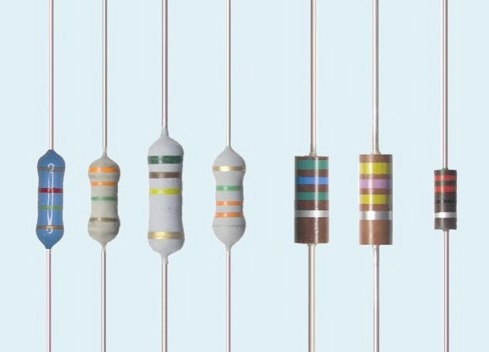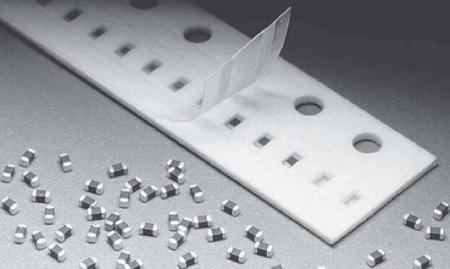Position:Home » Industry News
Choose the Right Resistors For Automatic External Defibrillators (AEDs)
Writer:Microhm Page View:Date:2019-11-12
Medical devices are leaving the confines of hospitals and serving the growing community-based and home-based healthcare markets. In particular, analysts cite the need for faster, lower-power, higher-precision, and more intelligent electronic devices. Since the human body is intrinsically analog, though, there will always be an important role for highly reliable passive components in systems including diagnostic, imaging, patient monitoring, instrumentation, and pharmaceutical delivery and dispensing applications. Approximately 20 passive components, including resistors, are needed for each active IC in a design. It is to say medical field is an important market for resistor manufacture, such as Microhm Electronics.
Regulations and the unique characteristics of the healthcare environment impose a particular burden of care on designers choosing passive components such as resistors.

The first area, contact, includes all devices with an electrical connection to the body. For example, these devices deliver high-energy pulses for defibrillation, detect biologically generated signals for electrocardiograms (ECG) or electroencephalography (EEG), and measure body impedance for respiratory or plethysmographic monitoring. Imaging encompasses X-ray, MRI, and ultrasound technologies, all with their own special demands on resistive components, in particular the ability to work with very high voltages and magnetic fields. Finally, medical instrumentation and analysis covers intravenous drip (IVD) and laboratory instruments where accuracy, repeatability, and stability are paramount.
To reduce the time-to-defibrillation delay and improve cardiac-arrest survival, health-service providers have increasingly turned to a strategy of wider access to defibrillation to augment emergency medical services. In some countries, automatic external defibrillators (AEDs) are provided to police, first aid volunteers, and even ordinary members of the public. Microhm Electronics also has an automatic external defibrillators in the office.
While AEDs pose the additional challenge of size- and cost-reduced components, all defibrillators need stable and repeatable measurement of the charging voltage, which determines the amount of electrical energy delivered to the patient. The defibrillator-charging circuit uses high-voltage resistors, with a high-value resistor, normally in the range of 5 MΩ to 50 MΩ, and a low-value resistor providing a potential divider for voltage feedback.

Critical features of such high-voltage resistors are linearity (expressed as voltage coefficient or VCR), temperature coefficient (TCR), and long-term stability under voltage stress. Thick-film resistors best suit this application. Their temperature characteristic is typically “U” shaped with limits expressed by the TCR, normally from ±25 to ±100 ppm/°C (Fig. 1). The TCR error can be reduced by choosing the highest-possible ohmic value, which lowers self-heating, and by designing layouts that avoid proximity to heat-generating components.
The voltage characteristic, by contrast, only ever has a negative gradient, with a limit expressed by the VCR, typically between –1 and –5 ppm/V. High-voltage resistors, such as Microhm Electronics' NUB series use special design techniques to minimize VCR, but this needs to be traded off against product size. As the gradient increases at high voltage, only operating the resistor at up to 75% of the full rated voltage can reduce VCR error. Designers need to choose resistors with both a low VCR and a high voltage rating. Furthermore, if the nominal VCR is known, compensation is relatively simple.
Environmental stability describes the limits of non-reversible resistance change under given loading and environmental conditions. The most demanding condition is high humidity, but some devices use a specially formulated high-density epoxy material to achieve typical resistance changes of less than 0.25% after 56 days at 95% relative humidity and 40ºC.
Regulations and the unique characteristics of the healthcare environment impose a particular burden of care on designers choosing passive components such as resistors.

The first area, contact, includes all devices with an electrical connection to the body. For example, these devices deliver high-energy pulses for defibrillation, detect biologically generated signals for electrocardiograms (ECG) or electroencephalography (EEG), and measure body impedance for respiratory or plethysmographic monitoring. Imaging encompasses X-ray, MRI, and ultrasound technologies, all with their own special demands on resistive components, in particular the ability to work with very high voltages and magnetic fields. Finally, medical instrumentation and analysis covers intravenous drip (IVD) and laboratory instruments where accuracy, repeatability, and stability are paramount.
To reduce the time-to-defibrillation delay and improve cardiac-arrest survival, health-service providers have increasingly turned to a strategy of wider access to defibrillation to augment emergency medical services. In some countries, automatic external defibrillators (AEDs) are provided to police, first aid volunteers, and even ordinary members of the public. Microhm Electronics also has an automatic external defibrillators in the office.
While AEDs pose the additional challenge of size- and cost-reduced components, all defibrillators need stable and repeatable measurement of the charging voltage, which determines the amount of electrical energy delivered to the patient. The defibrillator-charging circuit uses high-voltage resistors, with a high-value resistor, normally in the range of 5 MΩ to 50 MΩ, and a low-value resistor providing a potential divider for voltage feedback.

Critical features of such high-voltage resistors are linearity (expressed as voltage coefficient or VCR), temperature coefficient (TCR), and long-term stability under voltage stress. Thick-film resistors best suit this application. Their temperature characteristic is typically “U” shaped with limits expressed by the TCR, normally from ±25 to ±100 ppm/°C (Fig. 1). The TCR error can be reduced by choosing the highest-possible ohmic value, which lowers self-heating, and by designing layouts that avoid proximity to heat-generating components.
The voltage characteristic, by contrast, only ever has a negative gradient, with a limit expressed by the VCR, typically between –1 and –5 ppm/V. High-voltage resistors, such as Microhm Electronics' NUB series use special design techniques to minimize VCR, but this needs to be traded off against product size. As the gradient increases at high voltage, only operating the resistor at up to 75% of the full rated voltage can reduce VCR error. Designers need to choose resistors with both a low VCR and a high voltage rating. Furthermore, if the nominal VCR is known, compensation is relatively simple.
Environmental stability describes the limits of non-reversible resistance change under given loading and environmental conditions. The most demanding condition is high humidity, but some devices use a specially formulated high-density epoxy material to achieve typical resistance changes of less than 0.25% after 56 days at 95% relative humidity and 40ºC.
Keywords:
Latest News
- Resistor's role in measuring and correcting LED,,,
- Single through-hole resistors' characteristics ,,,
- Why shunt resistors for current sense applicati,,,
- Metal-film resistors with small size, high resi,,,
- 36W High-Current Shunt Resistors MMS8420,,,
- 1W Surface Mount Resistor MPR1206,,,
- An Overview of Microhm Electronics' Resistor Pr,,,
- More anti-sulfur resistors used in harsh envir,,,
- Resistance changes with temperature,,,
- 140W TO247 High Power Heatsinkable Resistor,,,
- MMS5930 is ideal for current sensing in industr,,,
- Shunt resistors selection for engineers' design,,,
- Considerations for choosing precision resistors,,,
- Ceramic Encased Cement Resistors NWH Series for,,,
- Resistors for Passive Balancing in Battery-Pow,,,
Hot Articles
- Microhm will take part in 10th Automotive World,,,
- Thanks for Visiting Microhm's Booth E5-5706 in ,,,
- Resistors in Short Supply: Blame Cars,,,
- New lunch: High Power Precision Shunt Resistor,,,,
- How to Test a Resistor,,,
- Innovative Technology, Future Electric: Electri,,,
- What is Precision Resistors?,,,
- SMD Resistors Sizes and Packages,,,
- The Construction and Features of Metal Film Res,,,
- What is a TO-220 Resisor?,,,
- Hot Selling Products: Precision Shunt Resistors,,,
- How to Calculate the Equivalent Resistance Valu,,,
- What is a Fixed Resistor?,,,
- Resistors in LED Circuits,,,
- Resistors Types and Materials Overview,,,
Resistance applications
- Heater Blower Motor Resistor in Air Conditioner,,,
- Select the Right Resistor for Harmonic Filterin,,,
- Precision Resistors' Construction and TCR,,,
- Surface Mount Resistor's Size and Package ,,,
- Difference Between High Precision Resistors and,,,
- Urbanization Development Bringing the Transform,,,
- Shunt Resistor MMS8420 for High Current Stable ,,,
- The Four Important Functions of Alloy Resistors,,,
- Industrial Roberts Applied to Solar Photovoltai,,,
- Why Zero-Ohm Resistors?,,,
- The Main Application for High Precision and Low,,,
- The Measurement Accuracy of Automotive Shunt is,,,
- Carbon Film Resistors' Features and Application,,,
- BMS for New Energy Vehicle,,,
- Miniature future for passive electronic compone,,,
